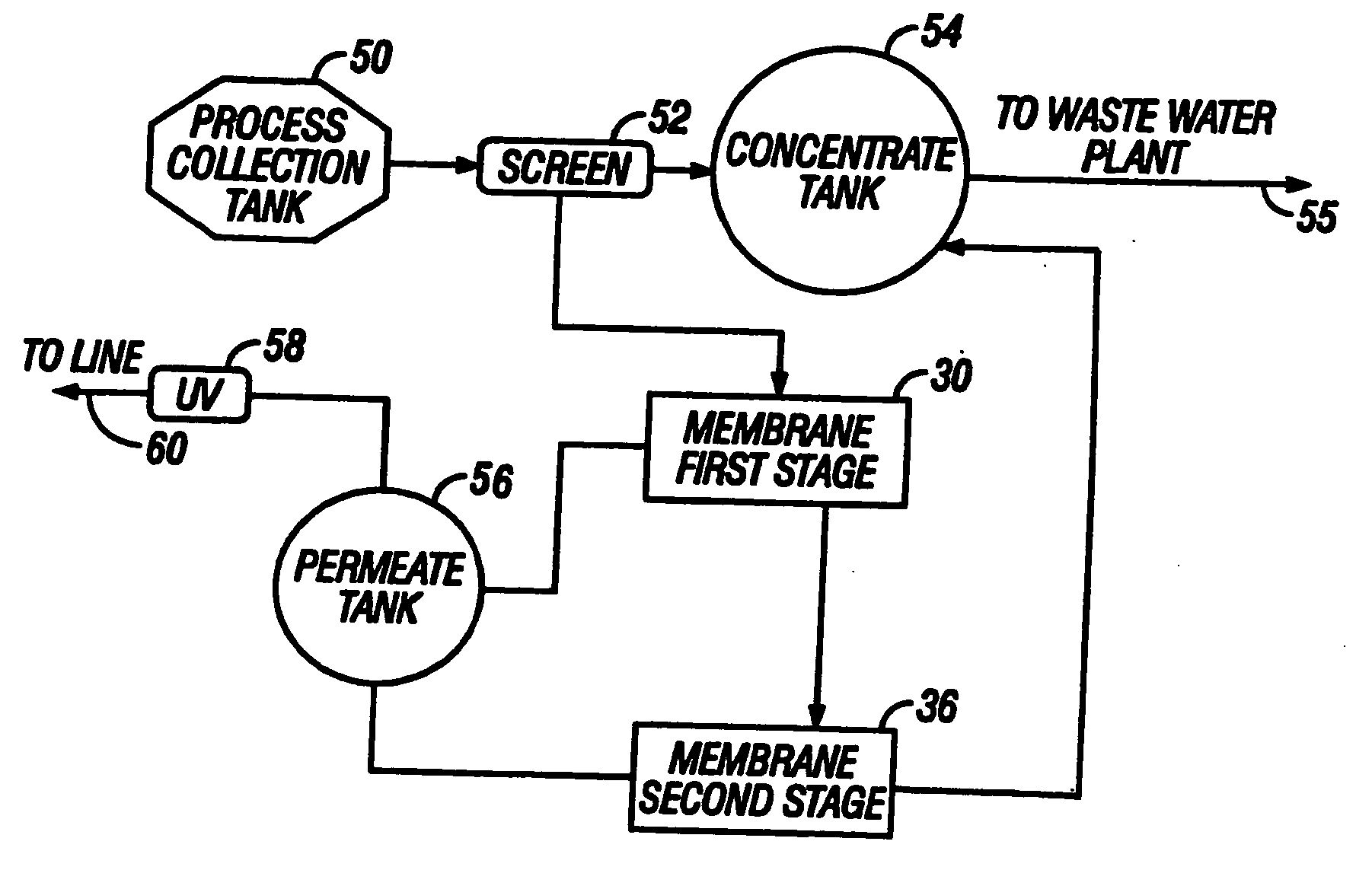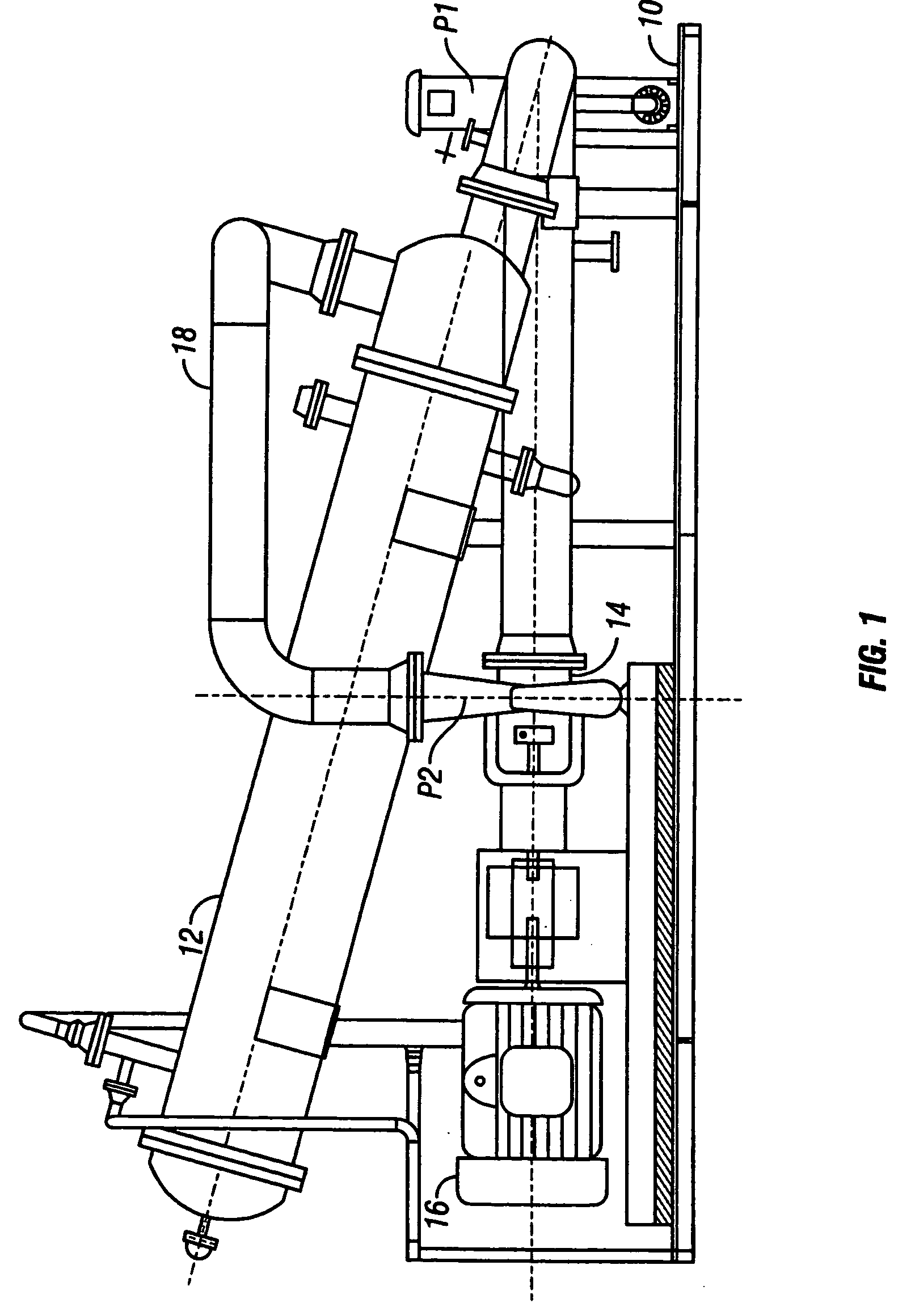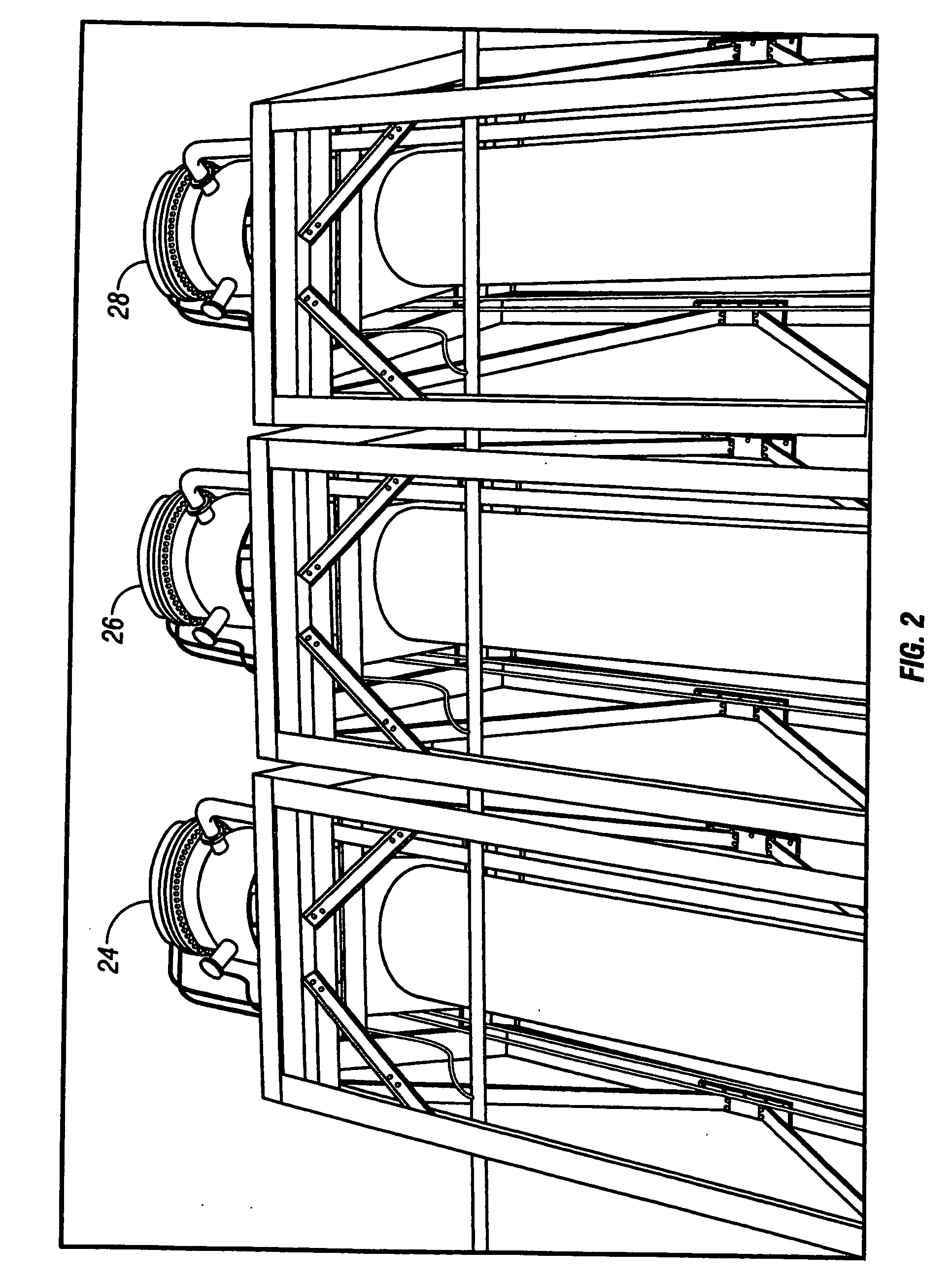Water filtration system for food processing line
a food processing line and water filtration technology, applied in the direction of multi-stage water/sewage treatment, membranes, separation processes, etc., can solve the problems of increasing the availability of industrial plant supply or fresh water, difficult to support animal life, and inability to meet the needs of processing water, etc., to achieve low maintenance requirements, improve the concentration of useful by-products, and minimize the effect of water volum
- Summary
- Abstract
- Description
- Claims
- Application Information
AI Technical Summary
Benefits of technology
Problems solved by technology
Method used
Image
Examples
Embodiment Construction
[0033] A first embodiment of a single tower configuration is shown in FIG. 1. In the preferred embodiment the system is skid mounted on skid 10, permitting assembly to be completed in an off-site factory and delivered for connection to the food processing system. The membrane tube 12 in this installation is generally on a slant from the horizontal, but the angle is not critical and as shown in FIG. 2, may be mounted in a fully vertical configuration to conserve floor space. The skid 10 is adapted to house the membrane tube 12, the recirculating pump 14, the power train and motor system 16 and the associated piping 18. Control panel cabinets may be installed at a convenient location and cabled to the skid mounted system via cables in the well known manner.
[0034]FIG. 2 illustrates three skid mounted towers 24, 26 and 28, mounted in a vertical tandem arrangement for multiple stage mechanical filtration. The towers are coupled together by piping, on-site during the installation process...
PUM
| Property | Measurement | Unit |
|---|---|---|
| pore size | aaaaa | aaaaa |
| pore size | aaaaa | aaaaa |
| temperature | aaaaa | aaaaa |
Abstract
Description
Claims
Application Information
 Login to View More
Login to View More - R&D
- Intellectual Property
- Life Sciences
- Materials
- Tech Scout
- Unparalleled Data Quality
- Higher Quality Content
- 60% Fewer Hallucinations
Browse by: Latest US Patents, China's latest patents, Technical Efficacy Thesaurus, Application Domain, Technology Topic, Popular Technical Reports.
© 2025 PatSnap. All rights reserved.Legal|Privacy policy|Modern Slavery Act Transparency Statement|Sitemap|About US| Contact US: help@patsnap.com



